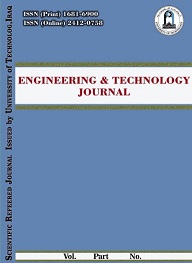Abstract
In this paper, the application of Sliding Mode Control (SMC) and its integration with Finite-Time Stability (FTS) for controlling 1-degree of-freedom (DOF) system has been explored. By combining FTS with SMC, the convergence speed is significantly improved, enhancing the system's resistance to external disturbances. This paper demonstrates a detailed comparative study on the application of SMC based on FTS with a SMC, and with conventional-PID (C-PID). The SMC developed in this paper is based on a PID controller to ensure that the system's trajectory converges exponentially to zero. The results show that using SMC with FTS provides faster and more reliable system stability compared to the other two methods. The comparison also includes the utilization of different functions in the developed SMC, such as sign, tan, and saturation functions. The effects of disturbance and uncertainty have been considered as well. The results show that using SMC with FTS significantly outperforms SMC without FTS and the C-PID in all cases; the achieved Settling Time of SMC with FTS is approximately 1.5 seconds, compared to 4 seconds for the Conventional PID (C-PID) controller. This represents a 62.5% improvement in response speed. The reduction in Overshoot for the C-PID controller is around 15%, while using SMC with an FTS controller reduces the overshoot value to just 3%, indicating an 80% improvement in overshoot and demonstrating enhanced stability and performance
Keywords
Sliding mode controller (SMC); Conventional PID (C-PID); Finite time stability (FTS); 1-Degree of freedom (1-DOF).
